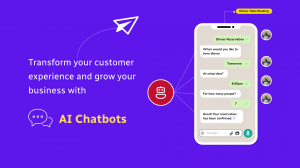Artificial Intelligence (AI) integration in the automotive sector completely changes how cars are built, operated, and designed. Even though AI has great promise in this industry, many obstacles must be overcome in order to use it properly. This paper examines the main obstacles and the corresponding fixes for incorporating AI into cars.
Challenge 1: Data Quality and Management
The effective operation of AI systems mostly depends on enormous volumes of data. This covers data from sensors, cameras, and car systems, among other sources in the automotive sector. It is quite difficult to manage and guarantee the quality of this data.
Solution: Implement strong data management plans. This includes using cutting-edge data cleansing methods, real-time data processing frameworks, and sophisticated data storage systems. Furthermore, using AI-driven data management solutions and working with data specialists can help preserve the integrity and quality of the data.
Challenge 2: High development expenses
Creating AI solutions for automotive uses might be costly. This covers the expenditures for hiring qualified staff, procuring state-of-the-art technology, and conducting research & development.
Solution: Businesses can apply AI in stages to lower their high development expenses. Beginning pilot projects to evaluate the viability and scalability of AI solutions can help manage costs. Moreover, creating strategic alliances with research organizations and AI consulting company might offer cheaper access to technology and knowledge.
Challenge 3: Regulatory and Safety Concerns
There are tight safety regulations in the car business that have to be followed. New regulatory issues arise with AI integration, namely about guaranteeing the dependability and safety of AI-driven systems.
Solution: Regulatory agencies must be worked with early in AI development. Regulations can be partially met by implementing explicit safety procedures and rigorously testing and validating AI systems. Further ways to avoid obstacles are to be proactive in compliance and keep up with changing laws.
Challenge 4: Threats to Cybersecurity
Cybersecurity risks can target AI systems in cars. By potentially exploiting weaknesses in AI-driven systems, hackers may be able to steal data or even take over vehicle operations.
Solution: Establish strong cybersecurity safeguards. For real-time threat detection and response, this includes implementing AI-driven security solutions, routine software upgrades, and sophisticated encryption methods. Routine security audits and promoting a cybersecurity culture inside the company further fortify defenses.
Challenge 5. The Acceptance of the Consumer
Consumer acceptance still needs to be solved, even with the progress of AI. A lot of customers question the reliability and safety of AI-driven cars.
Solution: Education and openness are key to establishing consumer trust. This may be accomplished by presenting the advantages of AI, giving precise details on safety precautions, and proving the dependability of AI systems with actual uses and endorsements. Offering pilot programs and hands-on experiences can also make customers more at ease with cars with AI integration.
Although the automotive sector's integration of AI poses several difficulties, intelligent solutions can successfully overcome them. This article is just an introduction to the source of AI in the automotive sector. You must go through the source to understand more about the practical possibilities of implementing AI in automotive. The automotive industry may fully use AI to spur innovation and improve vehicle performance and safety by concentrating on data management, cost control, regulatory compliance, cybersecurity, and consumer acceptability. Accepting these answers will open the door to a safer, more intelligent, and more effective future for car mobility.






